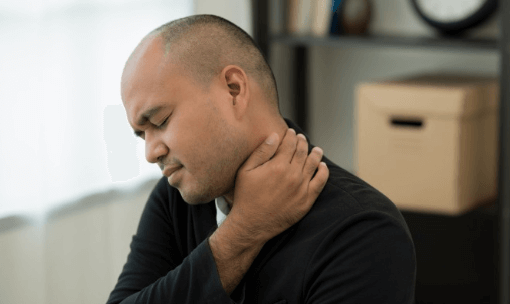While it may sound confusing, the most common type of neck pain is non-specific neck pain; that is, neck pain that occurs in the absence of an underlying disease or pathology, like an infection or osteoporotic fracture. Rather, non-specific neck pain is caused by postural or mechanical issues affecting the soft tissues in the neck. If symptoms persist longer than three months, it’s classified as chronic non-specific neck pain (CNSNP). What does the literature say is the best treatment approach for a patient with CNSNP?
In 2022, researchers published a systematic review and meta-analysis of previously published randomized-clinical trials with respect to both pharmacological and non-pharmacological treatments for CNSNP. The review included 119 randomized-clinical trials that included a total of 32 interventions and 12,496 patients. The authors focused on how each approach affected pain intensity and disability, as well as adverse events associated with treatment.
Compared with inert treatment (placebo or sham), the researchers found that a combination of active and/or passive multimodal non-pharmacological interventions is more effective for reducing pain and disability at six months post intervention. An example of such an approach would be spinal manipulative therapy applied by a chiropractor and neck-specific exercises performed by the patients at home between visits. Of note, the review did not find evidence supporting anti-inflammatory drugs for the management of CNSNP.
The authors also note that while guidelines focus more on active interventions such as education and exercise, this review shows that a combination of active (exercise) and passive (manual therapy) or a combination of two passive interventions may be among the most effective treatment options. Examples of passive interventions a patient may receive in a chiropractic office include spinal manipulative therapy, mobilization, soft tissue techniques, traction, acupuncture, etc.
From time to time, professional organizations or governing bodies will empanel a group of experts to look at the latest research to determine if treatment guidelines should be updated. If more systematic reviews like the one highlighted in this article are published that favor a multimodal approach favoring passive therapies, then guidelines may be updated to reflect that. Until then, your doctor of chiropractic will continue to use the best available evidence, as well as their clinical experience, to manage your chronic non-specific neck pain so that you can return to your normal activities as soon as possible.




